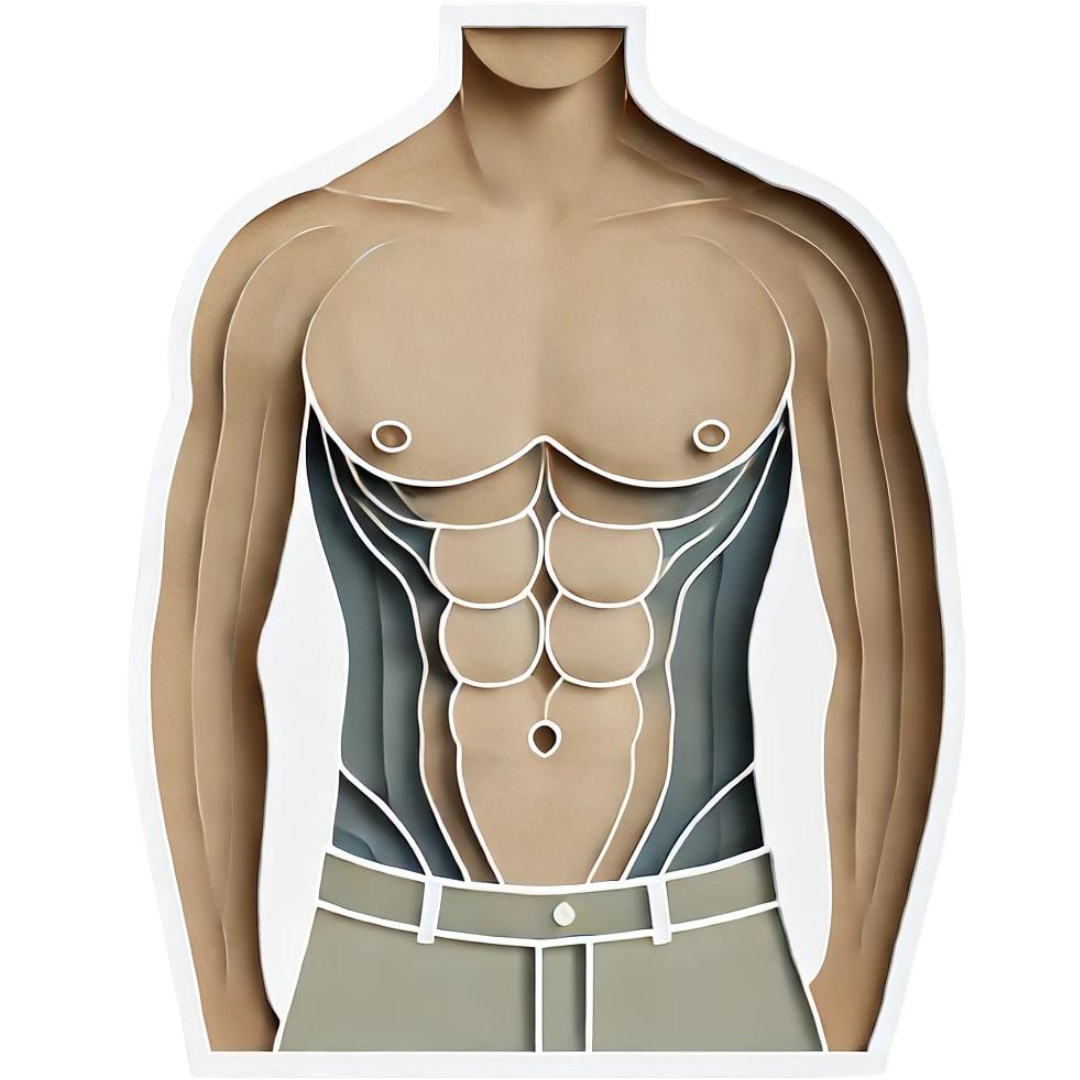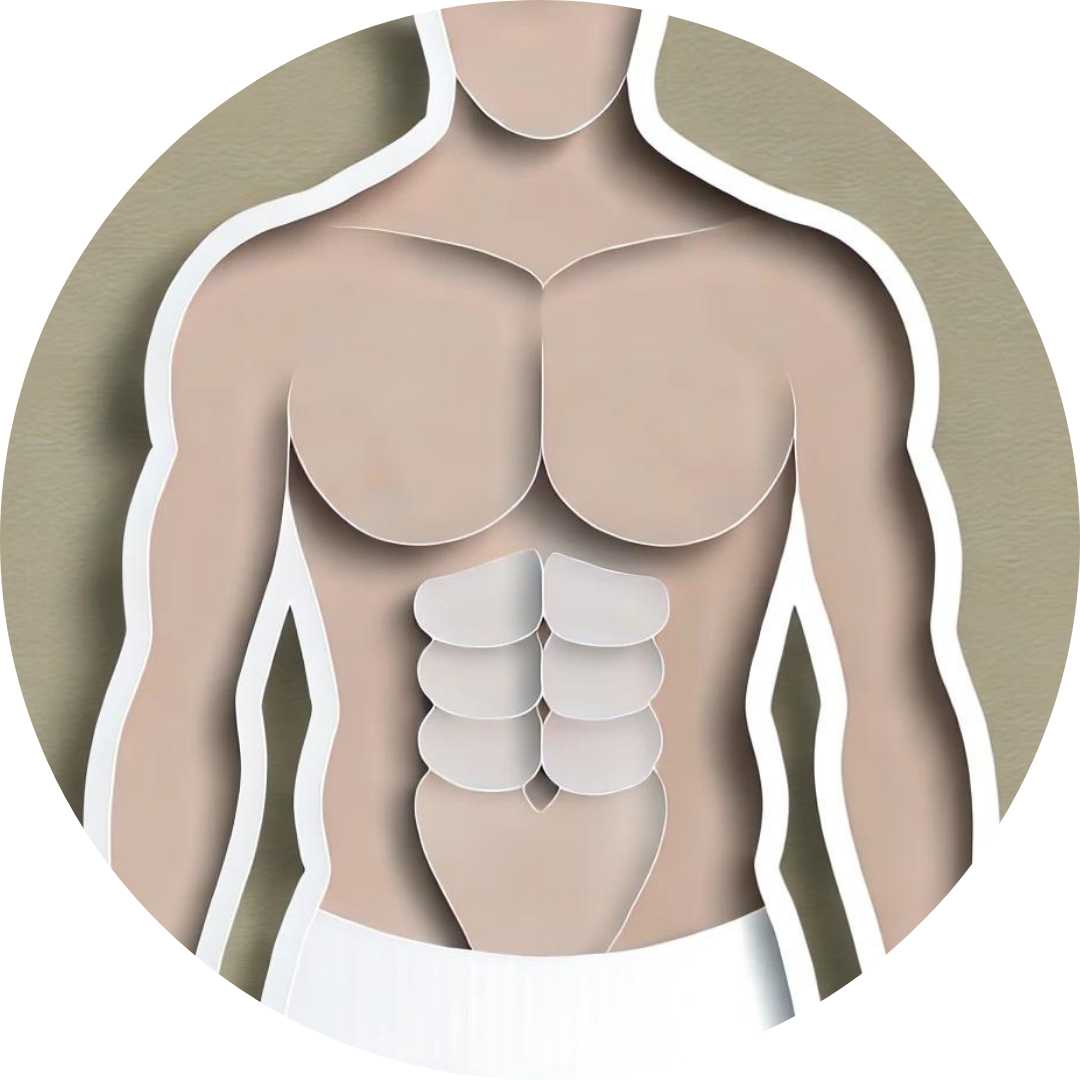Male breast reduction is a plastic surgery procedure that removes excess fat and glandular tissue from the breasts. The aim of the surgical treatment of gynaecomastia is to make the chest proportional to the rest of the torso, creating a flatter and firmer chest area with improved contours and minimal or virtually invisible scars. The surgery is usually done with a combination of liposuction, to remove the excess fat, and excision (“cutting out”) to remove the excess breast tissue.
Excess glandular (breast) tissue in men, called ‘gynaecomastia’ is a common condition, seen in an estimated 40-60% of men, and can result in significant social embarrassment and loss of confidence.
Both breast glandular tissue and fat can increase the size of breasts in men and usually depend on the age of the patient as well as the underlying cause. The most common cause of problematic gynaecomastia is residual breast tissue that does not go away through puberty. Less commonly, certain drugs (prescription and “recreational”) and hormonal medical problems can cause gynaecomastia. In the vast majority of cases there is no identifiable cause, and non-surgical treatments have no role in the treatment.
Meet your Surgeon

Dr Robert Knight
Meet your Surgeon
Dr Robert Knight FRACS:
- Registered Specialist Plastic Surgeon
- AHPRA MED0001198549
Education and Training:
- Attended medical school in South Africa, and trained at the internationally renowned Baragwanath Hospital
- Awarded a Cyanamid Pharmaceutical Scholarship, the Medical Students Council Award and the Graham Wilkinson Medal
- Member of the Royal College of Surgeons of Edinburgh
- Awarded the LGI cardiothoracic prize and presented at several conferences in London, Stockholm and Cologne
FAQ
How can this procedure help me?
The aim of male breast reduction is to make the chest proportional to the rest of the torso by removing excess fat and glandular tissue from the breasts. Benefits of male breast reduction include:
- Improved confidence and self esteem
- Improved fitting clothing
- Reduced discomfort from sore or tender breast tissue
The Consultation Process: What to Expect
During the consultation, your plastic surgeon will ask you a variety of questions covering everything from your current health situation to details about the physical outcomes you desire. Be prepared to talk about current medications, allergies and any past or current medical treatments.
An examination of your breasts will be done to check for abnormalities, lumps and asymmetries of the breast or nipple. An assessment of your breast size, shape, positioning and any differences between your breasts is done and several measurements taken. Your expectations and concerns will be discussed.
Based on your history and examination, your best options for male breast reduction are determined. Photographs of your breasts will be taken as part of this consultation, to allow for planning of the surgery and to assess results following your surgery. These will be kept strictly confidential between your plastic surgeon and their staff.
You will also discuss the recovery process and any potential complications that could arise. At any time, you are encouraged to ask any questions that you may have.
Your second consultation will further deal with your operation choices and reiterate the possible problems and complications with reference to your specific case.
Could it be breast cancer?
Although male breast cancer is rare, it’s important to take the proper precautions to prevent future health risks. Men who are in their 60s and 70s are most prone to male breast cancer. If you have any concerns with changes in your breast shape, size or color, we recommend you seek medical help immediately.
The Procedure: What Does it Involve?
There are several different techniques available depending upon your amount of breast tissue and shape. In most procedures, the incision line is where your areola and chest skin meet. The incision is small and unnoticeable once faded. Some cases involve a repositioning of the nipple to a higher level. Liposuction may also be used to contour the chest.
Will I need to be hospitalised for the procedure?
Male Breast reduction operations are done in hospital, under general anaesthetic, and take between two and three hours. It can be performed as a “day surgery” or overnight stay depending on your needs. All surgeries are performed in fully accredited facilities ensuring your safety
What is recovery like?
Drains will be removed the day of surgery or the following day. To optimise the healing process, you will be provided with a surgical vest with foam padding that will be placed over the treated area. The vest is usually worn for up to 6 weeks following surgery to reduce the reoccurrence of breast tissue forming and assists in the contouring of the chest. Stitches applied in the treatment area will dissolve naturally and require no need for removal.
Results: What and When?
Although swelling is minimal after male breast reduction, there will be some puffiness. You can expect this to settle over about 6 weeks with swelling to fully subside after 3 months.
When can I resume day-to-day activities?
Typically, patients can resume daily activities a few days after gynaecomastia surgery and can return to office work after one week. Jobs that require heavy lifting may require extended time off. Our plastic surgeons advise patients to avoid exercise during the time the compression vest is worn.
What complications can arise from the procedure?
As with any surgical procedure, there are potential risks and complications. These include:
- Infection
- Bruising, bleeding, haemotoma formation
- Scarring
- Anaesthetic problems
- Allergy
- Deep Vein thrombosis
- Pain
Risks and complications specific to Male Breast Reduction include:
- Nipple Necrosis
- Nipple Sensory Disturbances
- Breast Asymmetry
- “Dog ears”
- Unfavourable Cosmetic Result
The potential risks and complications of the surgery will be discussed with you in detail at your preoperative consultations.
Will this procedure leave scars?
Incisions are made in inconspicuous positions, that is, at the lower border of the areolar. As such, scarring is minimised.
What else should I consider before having this surgery?
There are some factors that you need to consider before deciding on surgery.
- Are you happy with your body weight or do you intend to lose weight in the future?
- Do you have a preconceived idea of how you would like your chest to look?
- Have you considered the effects of surgery on sensation of the chest and nipples?
- Have you considered the prospect of scarring on your chest?
To understand what is reasonable to expect from the surgery, it is a good idea to look at before and after photos. This will give you a good perspective of what results other patients have achieved through your surgeon’s work.
You may want to consider your planning for the healing period. Will you need help or assistance from others? Also if you do encounter complications, it is a good idea to understand how they are typically handled so that you are fully prepared.

Male Breast Reduction (Gynaecomastia) Before & After Photos
Do you have any more questions?
Please feel free to contact us with any additional questions that you might have about this procedure. Our team will be happy to address any concerns that you may have.
Costs
Male Breast reduction surgery attracts Medicare and Health Insurance rebates.
Out of Pocket expenses start at $8,200 including Surgeon, Anaesthetist, and hospital fees (where you are covered for private health insurance)
Please note, it is your responsibility to check with your insurance provider if you are covered for hospital and any associated costs.
For an accurate price, please contact us to schedule your consultation.






















